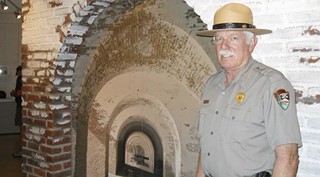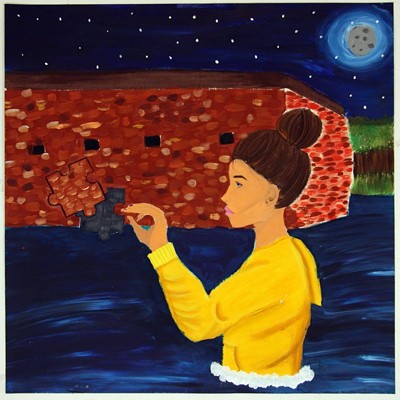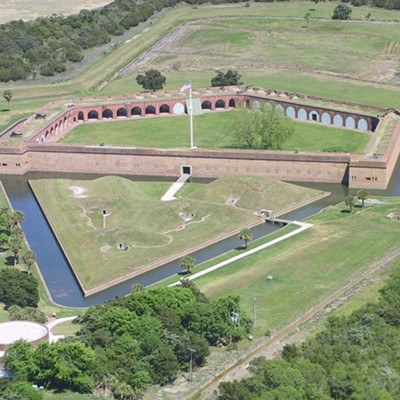I rarely think about Fort Pulaski at all, and when I do, my catalog of information reads something like this: a destination on the way to Tybee, and a good place to take an out of town guest.
An open-air, pentagon-shaped structure made of brick, with a vast lawn of manicured grass in the middle, and a moat surrounding the fort where sometimes one might see an alligator. Lots of old cannons and bricked archways; some nature trails, including one leading to a view of endangered Cockspur Island Lighthouse, and a small, unremarkable visitor information center.
Several years ago, on a visit to the fort for a story about the Cockspur Island Lighthouse, I became aware of the 1862 Civil War battle at Pulaski that changed the nature of warfare due to the use of rifle-bore cannons by the Union Army.
News of new exhibits in that visitor center led me back to Fort Pulaski last week, where I learned a few stories.
"The battle pretty much changed the world," said Randy Wester, Superintendent of Fort Pulaski National Monument. "There wasn't anyone who thought this could happen. They thought that Fort Pulaski was invincible."
An hourly schedule of tours, cannon firings and musket demonstrations retell Fort Pulaski's Civil War battle and surrender every day of the week. In the new exhibit, the focus stays on the battle story but shares space with other tales.
"While the 1862 siege is considered the focal point, there are many other stories to tell," says Wester.
Two historical markers in the parking lot hint of the other stories. One commemorates John Wesley's first sermon on American soil occurred on Cockspur Island in 1736. The other seems misplaced, memorializing Florence Martus, the Waving Girl who did her waving at passing ships from Elba Island, quite a ways up the Savannah River. (I later learned that Martus was born on Cockspur Island.)
Designed in large part by a class from the Savannah College of Art and Design, the new $210,000 exhibit is no longer unremarkable. It focuses on the life of the fort itself, and on the people whose lives were centered there at some point in its nearly 200 year history.
Wester points to a display of a six-inch-long door key and a door stop. "It's not a real dynamic artifact, but you'd be amazed how much interest there is in that key. We wanted to get into other stories besides the guns."
The gun story still takes center stage, with two life size cannon replicas revealing the mechanics of smooth bore versus rifle bore firing. Yet not ten minutes later I hear "Wow, look at that key!" from a fellow visitor.
Stories told include the early career of Robert E. Lee, supervisor of construction of the dykes and drainage system that readied low-lying Cockspur Island for the fort. On display are replicas of wildlife drawings made by the young-and-unmarried Lee, that he gave to potential girlfriends in Savannah.
Once the fort was part of the Confederate Army, Lee predicted that a Union attack would come from upriver and ordered that the fort's cannons be concentrated in that direction. The Union attack came from the opposite side of the fort.
Other stories? Colonel Charles Olmstead, the Savannahian who took command of the fort at age 25, leading the Confederates in the battle of 1862 and saving his soldiers' lives by surrendering to the Union after the fort was breached in the 1862 battle.
General David Hunter, the Union general who led the April 1862 attack on Fort Pulaski and made history a few days later by issuing an order freeing the slaves in Georgia, Florida and South Carolina. President Lincoln immediately rescinded the order.
Another fort story is that of the Immortal 600, a group of Confederate prisoners who were held by the Union Army at Fort Pulaski for six months toward the end of the war, in horrific living conditions.
In the 1930's young men again descended on the fort, this time as part of the Civilian Conservation Corps, restoring the fort after 50 years of abandonment.
At $3 per person, the fort offers a lot of story per dollar, and next weekend, August 14 and 15, admission will be free. Now that seems like another tale worth telling.


























